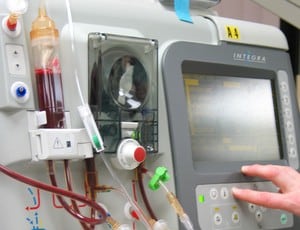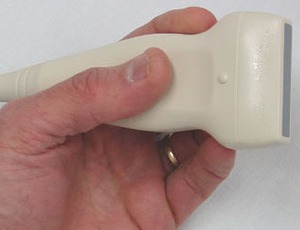Chemical characterization of IV drugs and phlebitis risk

“Knowing the characteristics of drugs to assess the risk involved in their administration related to their physicochemical nature may be useful to guide decision making regarding the most appropriate vascular access and devices” Manrique-Rodríguez et al (2020).
Review of hypodermoclysis for frail patients – Full Text

“In mild to moderate dehydration, HDC of fluids is a relatively accepted form of rehydration therapy, especially when other routes are inaccessible or ineffective” Wells and MacDougall (2020).
Factors predicting efficacy of ethanol lock therapy

“Our findings support the use of ELT for catheter salvage in children with CLABSI who failed standard therapy or had multiple catheter-related infections” Ashkenazi-Hoffnung et al (2020).
Neonatal central venous catheter associated UEDVT

“The study aims to evaluate risk factors of catheter-related venous thrombosis, clinical manifestations, treatment, and the outcomes of thrombotic events (TE) during the neonatal period” Chojnacka et al (2020).
Intravenous versus oral paracetamol for postoperative analgesia

“Patients receiving intravenous paracetamol also had a small reduction in postoperative opioid requirements” Stagg (2020).
Thromboembolic events triggered by central venous catheters

“Particular high risk is associated with the use of CVA devices for chemotherapy. Caregivers of GCT patients must be aware of the particular risk of TEEs” Dieckmann et al (2020).
Vascular access service for patients on haemodialysis – Full text

“The prevalence of CVC use was high and there were significant delays to AVF creation” Grant et al (2020).
Hemodialysis needle taping styles and dislodgement reduction

“We recommend that either the Chevron or butterfly style is used for dialysis needle taping, with the butterfly better suited to home dialysis” Chan et al (2020).
Formula to calculate insertion depth of subclavian central venous catheter

“We investigated the applicability and reliability of the modified formula for determining the depth of SCV catheterization” Ye et al (2020).
Choosing the correct vascular access device

“Thus, catheter selection, duration and indications for use, and prevention and treatment of complications vary according to the situation” Ponsoye et al (2020).
Implantable port in pediatric patients with malignancy

“With proper training and expertise, insertion and care of IVAD is safe in pediatric malignancies without significant complications” Sundaram et al (2020).
Pharmacist role in implementing smart infusion pumps – Full Text

“Predominant themes relating to the pharmacist’s role and successful implementation of the smart infusion pumps were determined” Shah and Jani (2020).
Accidental insertion of central venous catheter into the pericardial sac

“However, when the central venous catheter was used for the induction of general anaesthesia, the patient did not lose consciousness as expected” Elayavel et al (2020).
PICC tip position and complications in neonates

“We observed a high incidence of PICC-induced complications in neonates, with phlebitis being most common” Patil et al (2020).
Catheter fragment migration during central catheter exchange

“A gooseneck snare is an ideal option for retrieving catheter fragments that have migrated into deep veins” Xie et al (2020).
Complications associated with delayed extravasation identification

“However, if there is a delay in recognition and treatment, it can lead to complications like skin necrosis, gangrene, extensive soft tissue defects and contractures” Alexander (2020).
Needlestick and sharps injuries in an Indonesian hospital – Full Text

“We aim to provide incidence and other epidemiological aspects of needlestick and sharp injuries (NSSIs) among HCWs in a tertiary teaching hospital in Indonesia” Yunihastuti et al (2020).
Association between dialysis modality and infectious diseases

“This retrospective observational cohort study compared the emergency hospitalization and mortality for IDs between peritoneal dialysis (PD) and hemodialysis (HD) patients” Banshodani et al (2020).
Efficacy of dalbavancin in treatment of Gram-positive bacterial infections

“Dalbavancin was comparable to other antibiotics in treating chronic Gram-positive bacterial infections in terms of efficacy and safety” Wang et al (2020).
Tip positioning of the mid-length vascular catheters – Full Text

“At present, the tip positioning of the mid-length catheter mainly includes the anterior part of the axilla and the midclavicular line” Zhao et al (2020).
Rapid infusion pump for platelet administration

“The use of a rapid infuser decreases the platelet count of WB but does not decrease platelet function or overall hemostatic potential” Zaza et al (2020).
Needlestick injury in developing countries – Full Text

“The review indicated that NSIs have been identified as one of the most serious issues that affect the health and well-being of healthcare workers” Mengistu and Tolera (2020).
CLABSI due to Exophiala dermatitidis in an infant

“Prompt removal of the central line, followed by a treatment with amphotericin B or an azole, seems to be the most effective treatment” Kumar et al (2020).
Users knowledge of continuous subcutaneous infusion systems

“The CSII – Brazil instrument is considered adequate and validated to assess continuous subcutaneous infusion system users’ conceptual and procedural knowledge” de Oliveira Amaral et al (2020).
Device-associated health care-associated infections

“The significant overall reduction in DA-HAI rates indicates that a comprehensive infection control programme can affect DA-HAI rates” Iordanou et al (2020).
Nurses and physicians knowledge of guidelines for preventing CRBSI

“Based on this assessment and using the best available evidence, training programmes on the prevention of CRBSI should be developed” Al Qadire and Hani (2020).
Interprofessional training for ultrasound guided vascular access – Full Text

“Vascular access laboratories included needle-guidance training and provided an efficient way to master technically difficult venipuncture cases” Batten et al (2020).
Local signs increased probability of CRBSI – Full Text

“Local signs were significantly associated with CRBSI in the ICU. In the first 7 days of catheter maintenance, local signs increased the probability to observe CRBSI” Buetti et al (2020).
PICC placement training using embalmed cadavers – Full Text

“There were positive correlations between performing the PICC line (r=0.44, P=.11) and central line (r=0.63, P=.03) procedures on a cadaver and in a clinical setting” Kondrashova et al (2020).
How to approach teaching vascular anatomy

“Moreover, modern practice of medicine has put the arterial and vascular system in the center of numerous minimally invasive techniques” Georgakarakos and Fiska (2020).

